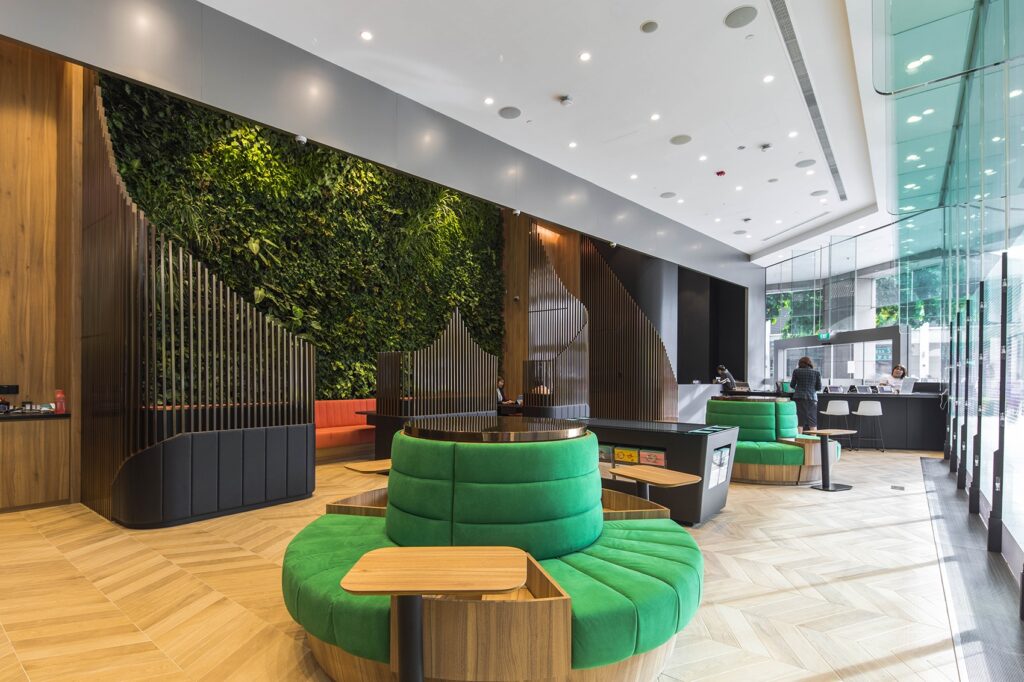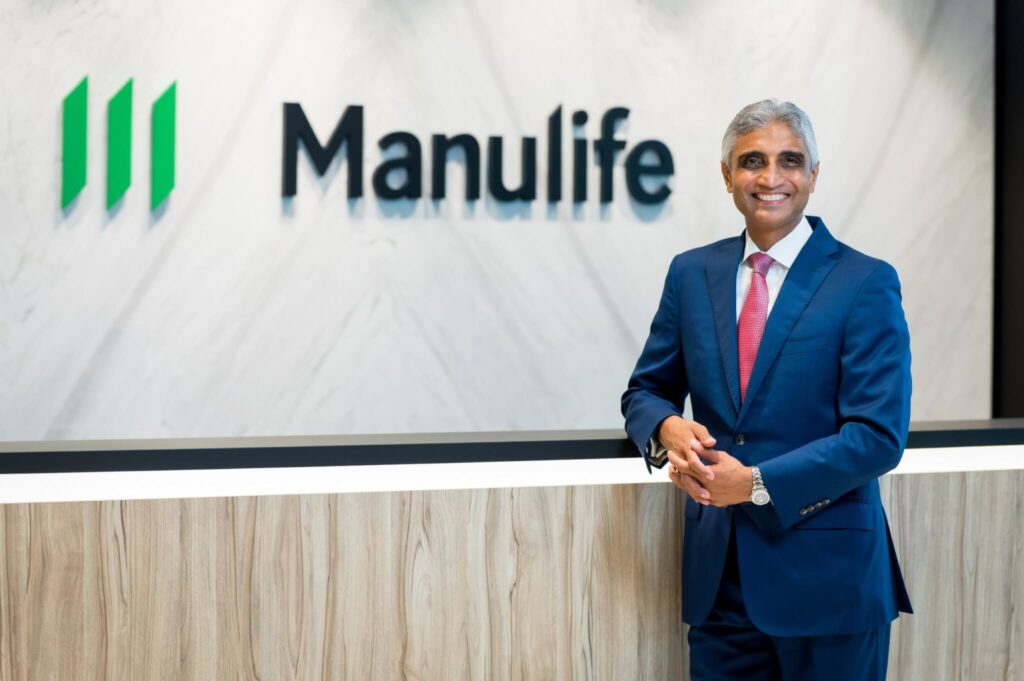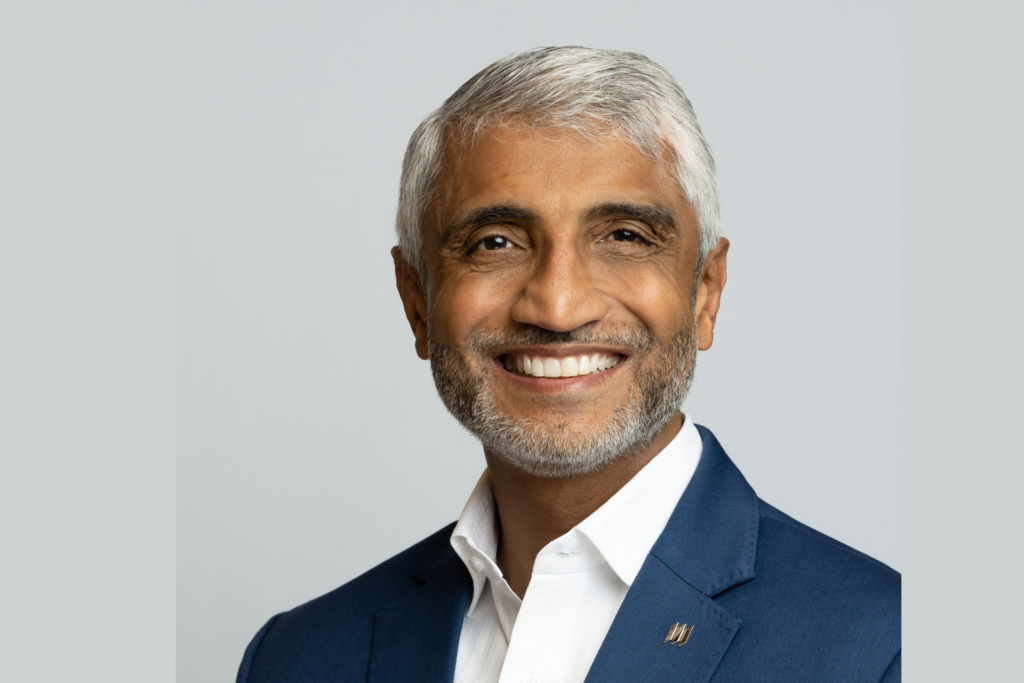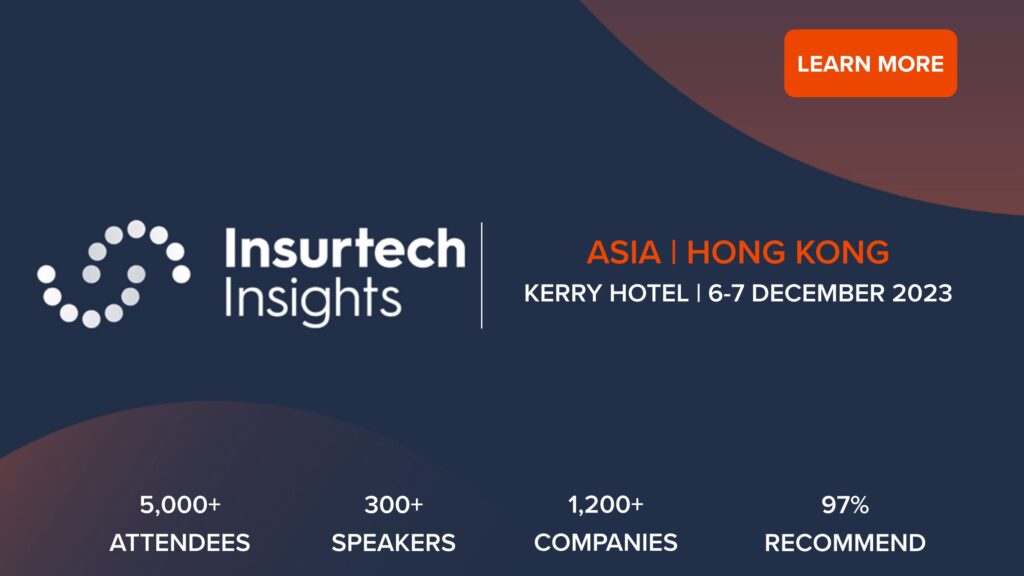He now oversees operational developments for one of Asia’s biggest insurance players. Insurtech Insights finds out more.
As the General Manager of Emerging Markets for Manulife Asia, Shah is responsible for the development of Manulife’s operations for insurance, wealth and health, across Southeast Asia and South Asia. The company has a strong presence in the region, Manulife’s Emerging Market General Managers report to him. They share passion for maximising consumer access to insurance and building financial resilience. Shah also enjoys the pace and dynamism of the role.
You’ve had an exciting career journey. Can you tell us about your educational background?
Yeah, my journey has been quite enjoyable. I’m an electrical engineer, and I’ve had the opportunity to work on some fascinating projects, including missile systems and elevator control systems. While I found fulfilment in what I was doing, I sensed that I wasn’t fully unleashing the potential of an engineering mindset. To me, the engineering mind is straightforward—there’s no problem which can’t be analysed and solved. I yearned for a broader stage to apply this idea, a dimension I felt was lacking in my engineering role, despite the cool projects.
Fortunately, during my time in graduate school, luck and good fortune intervened. A professor introduced me to the financial services world, sparking my journey into banking and brokerage in the bustling realm of New York City. I carried my problem-solving mindset and technological comfort from my engineering background into this new domain.
Being an engineer, technology is ingrained in everything you do—it’s foundational. While the accessibility of technology has skyrocketed since the beginning of my career, banking and brokerage in the ’90s were pivotal. I witnessed and participated in the online brokerage boom of that era. In the 1990s, trading stocks was largely confined to affluent individuals with private brokers due to the associated fees. The online brokerage boom changed the game, reducing costs to virtually zero in a decade.
I was part of a company that launched PC Financial Network, the first online broker in America, through an AOL dial-up modem connection. It was an exhilarating experience to witness and contribute to the transformation that made stock trading accessible to virtually everyone from ground zero.
How did that translate into your move to the insurance industry?
Interestingly, it all began with a stroke of good fortune. A close friend suggested I meet with a well-known US multinational life insurer, insisting that they were in need of individuals with my skill set. Trusting his advice, I engaged with numerous executives and sensed an environment where I could learn and truly thrive.
Honestly, I never thought insurance was my calling. I had reservations, envisioning it as potentially too slow-paced and not aligning with what I considered an exciting career. However, taking the plunge in 1999 has proven to be a fantastic career move. The experiences I’ve had since then have been nothing short of wonderful, defying my initial expectations.
It was really about leveraging my skill set in problem-solving and my comfort with technology. I pondered, “How can I do more with that?” Thanks to a few good people taking a risk on me and making key connections, I found my way to where I am today.
Part of your journey involved you becoming the CEO for Metlife Japan. How did this experience prepare you for your current role in Asia?
Yeah, it’s quite surprising how life takes unexpected turns. I never imagined living in Japan, let alone becoming the CEO of a major company there. A pivotal moment came when someone I consider very fortunate to have as a friend suggested that I seriously consider this opportunity. He emphasised that it could open up new options for me, and looking back, he was absolutely right. This individual, now retired and still a good friend, played a significant role in steering me toward this unique journey.

Becoming the CEO of a major company in Japan was an extraordinary experience. Japan, being a mature market, may not boast high growth compared to other Asian markets, but it presented a set of complexities—high competition, cultural nuances, language intricacies, and a rich legacy—that made it a unique challenge. Operating in Japan was an eye-opener on how to navigate a different landscape with distinct language and history.
One of the key lessons I quickly learned was that, in the insurance world, all insurance is local. Whether it’s a Japanese, Indonesian, Malaysian, or Cambodian consumer, the focus is on the local context. This realisation has been crucial in shaping my perspective. While global strategies exist for companies, the execution of those strategies must be deeply rooted in the local context. Having the right talent on the ground is paramount, even if they don’t all hail from the local community. The strategy may be global, but its localisation is critical, and successful execution becomes the ultimate differentiator.
What leadership skills have you learned from the experience?
When you delve into the insurance industry and engage in conversations with executives, including myself, you notice a common thread. We share similar challenges, objectives, and strategies at the highest levels of our industry. This observation holds true across various industries. The distinguishing factor lies not so much in the uniqueness of strategies but in the execution—how well it’s done, how sustainable it is, and who you’re doing it with, encompassing the people and the culture you cultivate within your organisation. These elements emerge as true competitive advantages, setting apart winning companies from those that may be average or below average.
The concept of execution involves various dimensions. It’s about the governance structures you establish, the cadence you build around execution, creating accountability in the organisation, and motivating your people. Motivation varies significantly based on cultural nuances—what motivates Japanese individuals may differ from what resonates with Indonesians or Filipinos. Understanding the intricacies of culture, language, and history becomes pivotal in cracking the code of both motivation and execution. The quality of execution holds a different meaning in Japan compared to the Philippines, emphasising the importance of appreciating local context.
What are the biggest challenges of leadership in a situation like this?
The final point I’d emphasise, especially in the role of CEOs, is the inherent loneliness that comes with the job. It’s like being in a fishbowl—everyone’s eyes are on you, seeking indications of your thoughts and decisions. Your effectiveness as a CEO is only as good as the information presented to you. A key lesson I learned is the necessity to be much more accessible, open, and focused on active listening.
The CEO title can evoke a certain level of fear in people, irrespective of whether you’re perceived as a good or bad leader. The fear often stems from assumptions that you may not have time for them or that you don’t want to hear bad news. These preconceived notions can make you vulnerable as a leader because, as a CEO, what you don’t know often matters more than what you do know.
Having experienced this phenomenon in the unique context of Japan, where I had the privilege to live and work, was truly phenomenal. It has significantly influenced how I approach my current role. Now, with CEOs reporting to me across Southeast Asia and South Asia for Manulife, I prioritise accessibility and support. Understanding the loneliness of the role, I strive to be there for my CEOs, providing a sounding board for their ideas.
Learning from my time in Japan, I recognise the importance of a support network for CEOs. Creating a space for fellow CEOs to share their challenges, stresses, and tensions can be cathartic, as the CEO journey is not an easy one. Balancing time for personal and professional life is a constant challenge. My experience in Japan, spanning eight years, not only brought personal enjoyment and success but also left a positive legacy. It has equipped me with insights into what the CEO role demands. In my current position, I aim to leverage these insights to benefit those working for me and help them become better CEOs in their respective countries at Manulife.
What makes each market so unique and which opportunities stand out to you most in terms of InsurTech insurance opportunities in Asia?
When we talk about emerging markets in Southeast Asia, this part of the world strikes me as the most exciting. Serving as a growth engine, it stands out as one of the most significant catalysts for the insurance industry globally and many other sectors. The demographics in this region are particularly appealing, with a relatively young population. The average age hovers around 30, and there are approximately 600 million consumers across Southeast Asia.
The region is swiftly urbanising, making these consumers highly accessible in more efficient ways. Moreover, it’s a digitally savvy group, a natural expectation given their youth and urban lifestyle. The onset of COVID-19 has only accelerated the digital proficiency of the population. Coupled with GDP growth rates two to three times higher than the rest of the world, Southeast Asia is indeed an exhilarating and dynamic environment.

This dynamic atmosphere also translates into immense opportunities for the insurance sector. Notably, there are significant health and retirement protection gaps in the region. To put it in perspective, the health protection gap in Vietnam is estimated at 36 billion, and 32 billion in the Philippines. In Malaysia, it stands at 47 billion, and in Indonesia, an impressive 82 billion, given its vast archipelago and substantial population.
Despite these sizable protection gaps, insurance penetration rates in the region are among the lowest globally. If there’s any silver lining from the pandemic for the insurance industry, it’s the heightened awareness of insurance’s significance. The increased emphasis on health and the importance of managing one’s health are tailwinds for the industry.
Having recently had our group board visit the region for our annual strategy and planning offsite, it was apparent the vibrancy and energy of Southeast Asia left a lasting impression on our largely North American board of directors. The experience served as a showcase on the current dynamism and the immense possibilities inherent in this exciting part of the world.
What are the key challenges that a newcomer faces when they want to enter the Asian marketplace?
The challenges in this region, having been immersed in it for quite some time, are significant and multifaceted. Firstly, Asia is not a homogenous entity, contrary to the broad label it receives when viewed from global perspectives like New York or London. Each country, from Japan to China, Indonesia to India, possesses unique cultures, languages, and regulatory environments. These markets are at different stages of economic, political, and regulatory maturity, necessitating a local approach for each.
Secondly, scale is imperative in the insurance business, particularly in the long-term and capital-intensive realm of life insurance. Sustained investment is crucial to accessing more consumers and providing digitally enabled capabilities. The shift to a digital landscape, accelerated by COVID-19, mandates a substantial appetite for investment at scale. Furthermore, the highly regulated nature of the industry means compliance with local laws and regulations, requiring significant investments in people and compliance frameworks for each market.

Lastly, talent scarcity is a pressing issue. A war for talent is underway, influenced by factors such as an ageing population, technological advancements, and the newfound flexibility of choosing where to live and work. These emerging markets still lack a deep talent pool, making talent development and retention a constant investment.
In terms of trends driving innovation, the foremost challenge is improving consumer financial literacy. The insurance industry struggles with the fact that people don’t inherently think about insurance, and there’s a lack of understanding regarding its importance. Leveraging digital technology to enhance financial literacy, simplify insurance processes, and make it more accessible is crucial. While generative AI is on the horizon, the current focus is on addressing fundamental challenges and creating a more consumer-friendly landscape.
If you could change one thing today about the insurance industry with a click of your fingers, what would it be and why?
It would have to be two things. Simplifying insurance and enhancing accessibility are the two key aspects that I believe would significantly impact the insurance industry. Drawing from my experiences in various global markets, including Asia, the first challenge is making insurance simpler and easier to understand. Even as someone deeply entrenched in the industry, I acknowledge its complexity. Regulatory requirements, while necessary, can unintentionally complicate the consumer experience. Streamlining and clarifying insurance policies would address a major barrier.
The second crucial element is reducing the cost of acquisition. Insurance traditionally relies on human intermediaries who deserve fair compensation for their role. However, the high cost of acquisition hinders insurers from efficiently targeting the mass market, especially in regions like Asia with vast untapped potential.
If we can successfully crack these challenges, the insurance industry has the potential to expand significantly, possibly reaching ten times its current size. The tipping point for this transformation is catalysing the embrace of technology and a re-evaluation of industry practices, a shift further accelerated by the impact of COVID-19. Better alignment of insurers and regulators also presents an opportune moment to truly address the mass market and provide essential products to millions who deserve access. Beyond the industry’s growth, the ultimate goal is to empower individuals with financial freedom, making decisions easier and lives better for a broader segment of the population.
What inspires you in the insurance industry today?
I never imagined myself working in insurance, but my early experience in the industry during the aftermath of 9/11 was a profound eye-opener. At that time, I was with one of the major insurers for those in the World Trade Center towers. The tragic event underscored the transformative power and positive impact that insurance holds.
In moments of great need, be it accidents, losses, or significant life events like retirement, insurance steps in as a pillar of support. It became evident to me that our industry doesn’t just provide a financial service; it plays a crucial role in people’s lives. We act as a safety net, sharing the responsibility with governments to create a social safety net. This collaboration ensures that individuals have access to additional healthcare options and enhanced retirement solutions, supplementing national plans.
From this perspective, insurance isn’t merely a financial transaction – it’s a force for good in society. It actively contributes to the well-being of individuals, families, and the broader community. Beyond providing coverage, we actively participate in supporting individuals during their most challenging moments.
The premiums collected from policyholders aren’t just earmarked for claims; they are investments in government debt and local capital markets. By strategically channelling these resources, the insurance industry becomes a vital force for economic growth. It supports governments in building infrastructure and empowers local businesses to expand.
Despite these significant contributions, there’s a prevailing challenge—we struggle to effectively communicate our societal impact. The industry’s multifaceted role, from aiding individuals in times of need to fueling economic development, often goes unnoticed. Bridging this communication gap could foster a deeper understanding of the essential and beneficial role insurance plays in shaping and sustaining societies.
Join Sachin Shah in Hong Kong at ITI Asia 2023
Discover Manulife’s latest strategies and innovations. Join Sachin Shah at Insurtech Insights Asia 2023 in Hong Kong at the Kerry Hotel on December 6th and 7th, 2023 where he will be taking part in the panel: ‘How to Achieve Scale in Emerging Markets‘.
To find out more, click here
Interview by Joanna England









